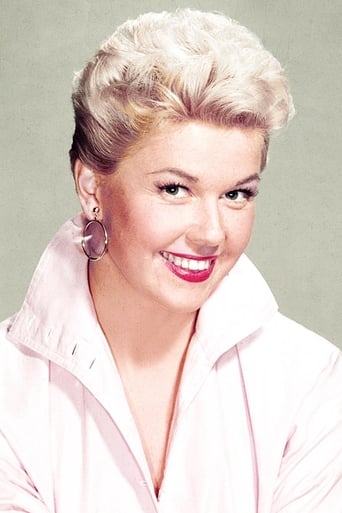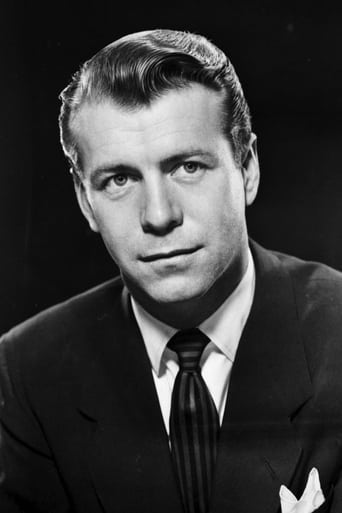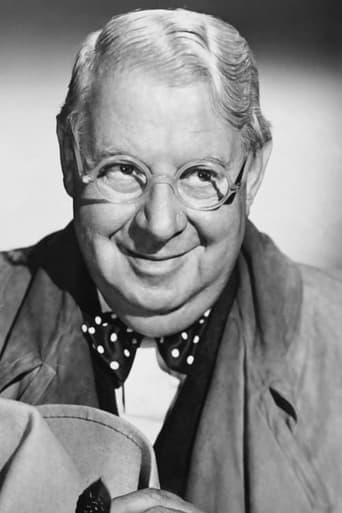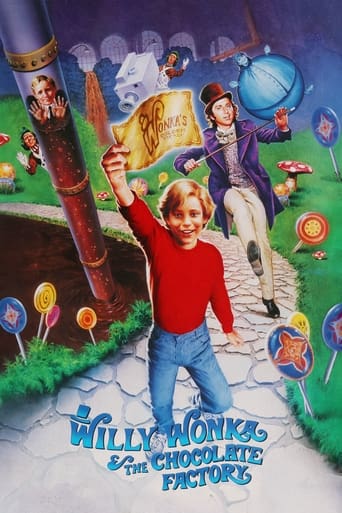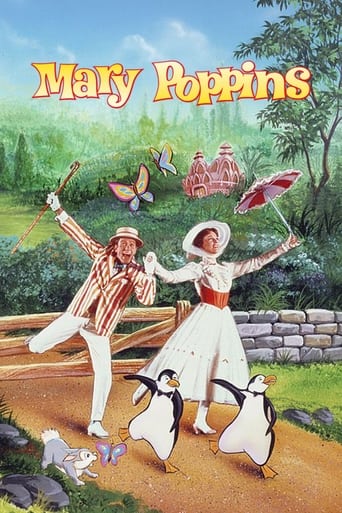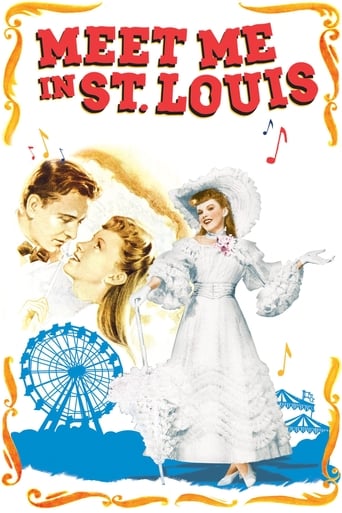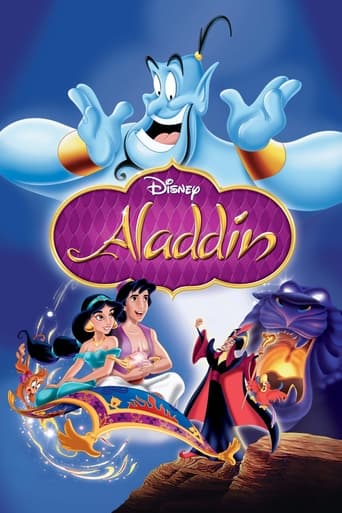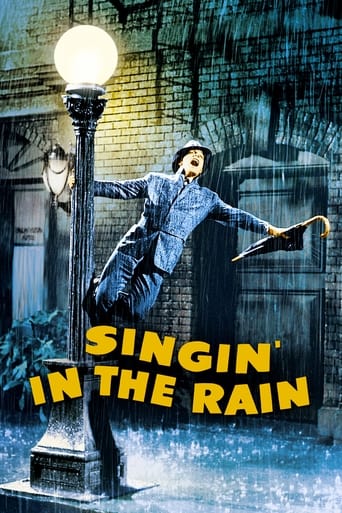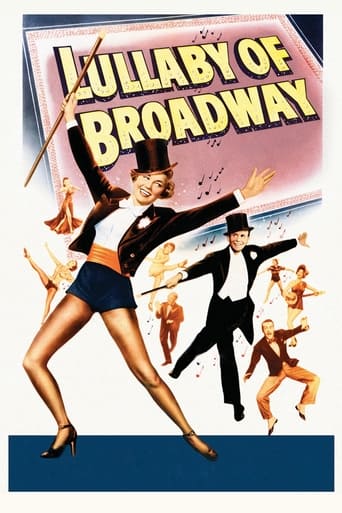
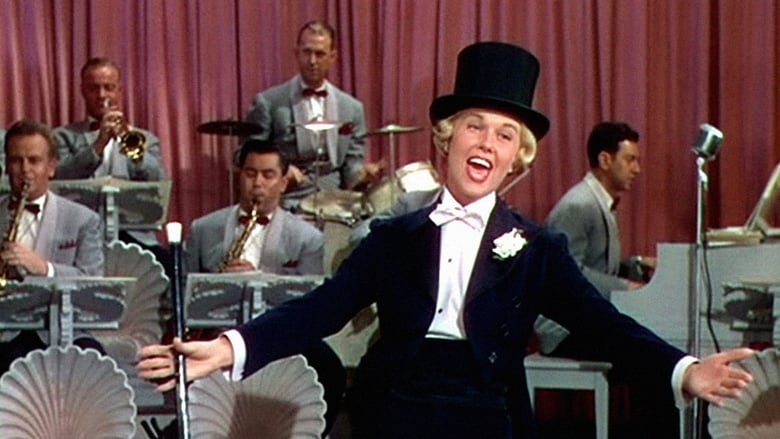
Lullaby of Broadway (1951)
Pretty Melinda Howard has been abroad singing with a musical troupe. She decides to return home to surprise her mother whom she thinks is a successful Broadway star with a mansion in Manhattan. She doesn't know that her mother is actually a burnt-out cabaret singer with a love for whiskey. When she arrives at the mansion, she is taken in by the two servants who are friends of her mother's. The house actually belongs to Adolph Hubbell, a kind-hearted Broadway producer who also gets drawn into the charade. Hubbell takes a shine to Melinda and agrees to star her in his next show. Melinda also finds romance with a handsome hoofer who's also in the show. All is going well for Melinda except that she wants to see her mother who keeps putting off their reunion.
Watch Trailer
Cast


Similar titles
Reviews
Overlooking the slight and highly improbable storyline, LULLABY OF Broadway is a minor showcase for Doris Day during her early years at Warner Brothers.She acts, sings and dances with consummate ease, does some good routines with co-star Gene Nelson, and makes it easy to see why she was such a natural in front of the Technicolor cameras. Songs are sprinkled throughout to overcome the uninspired plot which has her searching for her long lost mother (Gladys George), unaware that her mother is on the skids singing in cheap bars for a living.A reunion of mother and daughter sponsored by friend Billy DeWolfe paves the way toward a happy show biz ending, highlighted by Day and Nelson doing a nifty tap-dancing routine up and down a staircase with dozens of extras while rendering the title tune in bright fashion.Nelson's zesty rendering of "Zing Went The Strings of My Heart" shows off his ability to sing and dance with the best of them. Too bad his career at Warners never reached full potential.S.Z. Sakall and Florence Bates are on hand for comedy relief, making this a pleasant diversion for Doris Day fans who relish her kind of sunny disposition in musicals.
In a different perspective of the plot for Lady For A Day, Warner Brothers gave Doris Day one of her best musical films in Lullaby Of Broadway. They even tributed Busby Berkeley somewhat in the finale number.The story involves Doris as a young performer who has spent her childhood in the United Kingdom with money sent to her by her mother who she believes is a famous Broadway star. That's in the past tense unfortunately mom who is played by Gladys George now sings in a cheap cabaret in the seamier parts of Greenwich Village.But Doris is such a good kid that everyone tries to keep the illusion going from former vaudeville colleagues Billy DeWolfe and Anne Triola to S.Z. Sakall whom they now work for as butler and maid. She even gets involved with rising new Broadway performer Gene Nelson. But she also innocently almost breaks up S.Z. Sakall's marriage to Florence Bates. Now there's a couple to contemplate about.In her memoirs Doris Day said that S.Z. Sakall in real life was the same lovable uncle type that he played so well in films. And yes no one could resist pinching those cheeks either.Gene Nelson sad to say came along just a half generation too late to become a major film star. He had the moves and he had the talent, possibly he was not a creative individual in the way that Fred Astaire or Gene Kelly was. I think he was in their league as a performer and he'd be as known as they are today if he had that creative talent that they did which is why they've become the legends they are. Maybe Nelson never got the chance they did. Anyway this was his only lead in a major motion picture and it didn't make him a star because musicals were on the downside.Gladys George has only a few scenes, but she really makes them count when she's on screen. One of her more memorable characters in earlier years was the Texas Guinan like performer in The Roaring Twenties who carries a torch for James Cagney. When that film ends she's singing in a dive and her character could be an extension of Panama whom she played in The Roaring Twenties.As often as not for Doris Day films Warner Brothers reached into their trunk catalog and in this case got the title song and another standard written by Harry Warren and Al Dubin, You're Getting To Be A Habit With Me. Here though they outdid themselves for Doris and Gene using stuff like Somebody Loves Me and Just One Of Those Things. When you've got George Gershwin and Cole Porter contributing to the score the rest doesn't even matter.Watching the finale number which is the title song, sung by Doris and danced by Gene Nelson and a chorus it plays very similar to the choreographic sequences in Golddiggers of 1935 where Lullaby Of Broadway was introduced. No kaleidoscopic overhead shots that characterized those old Warner Brothers musicals from the Thirties are here, but in all other respects they seem to have copied Mr. Berkeley well.Lullaby Of Broadway has a nice backstage plot, it's a throwback to their musicals of the Depression in many respects and it provides Doris Day with many opportunities to display singing and dancing talents. And it holds up well today.
I was only familiar with Doris Day from her later romantic comedies of the late 50's and 60's, many with Rock Hudson. I also was a fan of her T.V. Show and her great Hitchcock movie with Jimmy Stewart, "The Man Who Knew Too Much." This was the first of her early movies that I have seen, and she is simply sunshine in a bottle. She seems to be enjoying every minute of every scene. Her joy is infectious. It is hard to watch the film and not respond to her by cheering up, no matter how your day may be going. Her supporting cast are also delightful and seem to be enjoying themselves. It was great to see Gladys George repeating her "Shantytown" song which she sang to James Cagney in "Twentieth Century" 13 years before. Billy De Wolfe is total gay delight as butler. He explains that he is really an actor, but took the butler job because of a "crazy, mad desire to keep from starving." Anne Triola compliments him perfectly as his maid/fiancé and they do an hilarious duet together. S.Z. Sakill steals the show as the flirtatious Broadway angel who is using his wife's money behind her back to invest in shows so he can oogle the actresses. Finally, there's Gene Nelson as Doris Day's song and dance partner. I have never seen him before, but he is quite a good dancer. At the beginning a fan tells him that he's the best dancer in the world. "It's you and me against Fred Astaire," he says. He does dance in Fred Astaire's style and is about as close to Astaire as anybody is likely to get. Typically, the male leads in musicals are the biggest problems, unless,they're Fred Astaire, Gene Kelley, or James Cagney, they're usually good dancers who can't act or good actors who can't really dance. Here, we seem to have somebody who can do both. The double plot has a) Doris Day coming back to New York to see her mother who she thinks is a big star, but is only an alcoholic cabaret singer, and b)some Broadway entertainers trying to entice S.Z. Sakill to invest his wife's money in a Broadway show. Not too original, but great one liners keep it moving cheerfully along between about a dozen small scale musical numbers. The director wisely understood that with Doris Day singing, you don't need Busby Berkeley super-sets or super choruses. This is a must for Doris Day fans and a wide toothy smile for everybody else.
How could it grow old, since all the songs were already vintage when "Lullaby" was filmed (except for "You're Dependable")? Doris Day, only five or so years into her remarkable film career is delightful and utterly natural -- despite the (for her) challenging dance numbers. She was, in fact, a good dancer: her early dreams of a career in dance were cut short by an automobile accident.Not ten seconds after the film's opening establishing shot of a (miniature) ocean liner at sea, La Day trots out perkily in tuxedo, top hat and cane and launches into a singing / tap-dancing performance of "Just One of Those Things." It would stop the show -- and indeed DOES, on repeated viewings, for all the wrong reasons. Brilliantly choreographed for, essentially, a non-dancer, brilliantly shot and edited, and brilliantly delivered by the radiant Day . . . on closer examination one realizes all is not what it seems, here.No doubt extensively rehearsed, "Just One of Those Things" seems rather to be "pose," "segue," "pose." The timing and precision of the leg and arm extensions, the turns, the wink, are virtually geometric exercises rather than the true fluidity of a dancer like Eleanor Powell or Ann Miller.The "tapping" is curiously incongruous to Day's actual movement and energy -- cleverly disguised in many angles by audience members' heads or by distance (so her feet are seldom clearly visible, and then only as she enters one pose or leaves it for another). Yes, tap dancers' "taps" (even Gene Nelson's) were always pre-recorded and dubbed. But note the difference in how "Just One of Those Things" is shot and edited, compared to every other dance number, and wonder, "Why?" Much more convincing is her "Somebody Loves Me" routine in producer Ferndell's studio, with Gene Nelson. Here, the camera shows Day in full body, smoothly and convincingly tapping her way all over the screen.She's fine in all her other dance numbers too -- particularly the treacherous stair dancing duet with Nelson in the final production number.There are several unnecessary lapses into slow-motion in two of the production numbers, which only call attention to camera trickery and distract from the dancers. Then again, Fred Astaire occasionally used slo-mo too.Vocally, of course, Day is superb. If all you know of her vocals is "Que Sera, Sera," go to Google and download her versions of "I Got Lost in His Arms" and "Who Are We to Say" (with Andre Previn) for a distillation of one of the 20th Century's most beautiful voices.Gene Nelson's dancing, on the other hand, really DOES stop the show -- for all the right reasons -- in "Zing! Went the Strings of My Heart" with the Page Cavanaugh trio. His leap from across the floor to atop Page's piano, where he continues tapping, is heart-stopping, as is his final split-leap over the pianist's head. Amazing! The acting is fine for this sort of 50's Broadway trifle. Day is always believable. Nelson, mostly (except for an annoying tendency to giggle over his lines occasionally, for no discernible reason: "We'll have a wonderful time (giggle) falling all over each other"). Gladys George is terrific in her few scenes -- whether belting "A Shanty in Old Shanty Town" or portraying the alcoholic has-been her character has become. Her final scene meeting her daughter (Day) is economical and heartbreaking, despite the hackneyed lines ("It's tough being a mother. I need a couple more rehearsals.").Hungarian actor S.Z. Sakall, who fled the Nazis for Hollywood, essentially played the same role in all his films. And did it brilliantly, charmingly mangling the English language to the best of his scriptwriters' abilities.Second bananas, Billy De Wolfe and Anne Triola mug and ham jarringly -- particularly big-voiced Miss Triola, who apparently thinks she's on a stage, projecting her big eyes and big voice to the back row of a theatre, instead of acting for the cameras. She's not believable for a second.Yet none of it finally matters. The Technicolor production is glorious to look at; the costumes (Milo Anderson) riotous (how DID Day's "broke" character pack those fabulous clothes, especially the spectacular party gown she wears to the Hubbell's party two nights after she arrives in New York, in one of her two tiny suitcases?), and the musical direction and orchestrations of Ray Heindorf and Howard Jackson sheer joy."The young at heart never grow old," Melinda (Day) tells Hubbell (Sakall).Neither will "Lullaby of Broadway." Endlessly watchable. Endlessly listenable.


